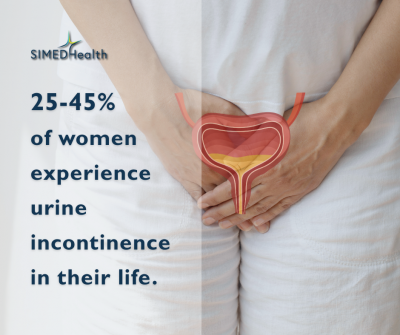
World Incontinence Week - Urinary Incontinence in Women
1. What is incontinence, and how common is it in women?
Incontinence is the uncontrolled leaking of urine. 25-45% of women experience urine incontinence at some point in their life. The incidence increases with age, pregnancy, and menopause. For women 70 and older, at least 50% experience incontinence.
2. What are common types of incontinence that women experience?
Stress incontinence occurs when the pressure inside the abdomen and pelvis increases and urine is forced out.This can occur with lifting something heavy, or a simple sneeze, cough, good laugh.Urge incontinence occurs when one experiences a sensation of the need to urinate, and a sudden leak occurs.Some women are troubled with both stress and urge incontinence.
3. Why is incontinence more common in women?
It’s mainly due to anatomy and life events.Women have a shorter urethra – the tube urine flows out from, and their bodies go through changes like pregnancy and having babies. These changes can weaken the pelvic floor muscles that support the bladder and urethra, making it more challenging to control leaking. Also, as women get older, their muscles can naturally get weaker, and their estrogen hormone levels fall, each contributing to the development of incontinence.
4. Why do women tend to avoid talking about incontinence?
Social stigma and feelings of shame can make it difficult to openly talk about bladder control issues. It is often seen as a sensitive or embarrassing topic, which can lead to the perception of being judged, which discourages them from seeking help or sharing their experiences. Lack of awareness contributes to the silence surrounding this common health issue.
5. What treatment options are available?
Treatments will depend on the type and severity of incontinence; however, the options include: life style changes such as reducing caffeine, losing weight, and regularly timed bathroom visits; pelvic floor exercises to strengthen the muscles controlling urination; certain medications can help calm overactive bladders; urethral inserts or vaginal pessaries can help align the structures for better function; and surgical options are available.
6. When should a woman see her physician about bladder control issues?
Bladder issues are common, however, that doesn’t mean women have to deal with them in silence. Consider contacting a physician when the symptoms begin to interfere affect daily life – sudden, strong urges to void making it difficult to get to a bathroom in time; leaking interfering with work, exercise, or social life; frequent urination beyond what one is used to; discomfort during or after urination; sudden changes in your urination pattern; or if activities or events are being avoided because of urine issues.
Learn more about SIMEDHealth Women's Health & Primary Care.
To schedule an appointment with SIMEDHealth Primary Care or Women's Health, click here.